Key takeaways:
- Selective Mutism is an anxiety disorder in children that inhibits vocal communication in social settings, often requiring supportive environments to help them express themselves.
- Group activities foster belonging and can empower children with selective mutism to communicate more freely, reinforcing the importance of peer connection and active participation.
- Strategies like creating nurturing environments, encouraging gradual participation, and incorporating play can significantly enhance communication among children with social anxieties.
- Building confidence in group settings can be achieved through meaningful interactions, recognizing individual contributions, and finding common ground with peers.

Understanding Selective Mutism
Selective Mutism is a complex anxiety disorder that primarily affects children, causing them to be consistently unable to speak in certain social situations, despite having the ability to communicate in more comfortable environments. I remember meeting a young girl named Lily, who would light up in front of her family yet would become silent at school. It’s heartbreaking to witness the struggle behind the silence—is it fear, anxiety, or something deeper?
The condition often manifests in settings where the child feels pressured or anxious, like classrooms or playgrounds. Picture being in a room full of strangers, where every gaze feels like scrutiny; this scenario can be terrifying for a child with selective mutism. I often wonder how many potential friendships are lost due to this barrier of communication.
It’s crucial to understand that selective mutism isn’t merely shyness; it’s an overwhelming experience that can affect a child’s social interactions and emotional well-being. Reflecting on my experiences, I’ve seen how kids like Lily find comfort in familiar spaces, but that doesn’t always translate to ease with new peers. How can we better support them in these transitions? Providing a safe and understanding environment is key.
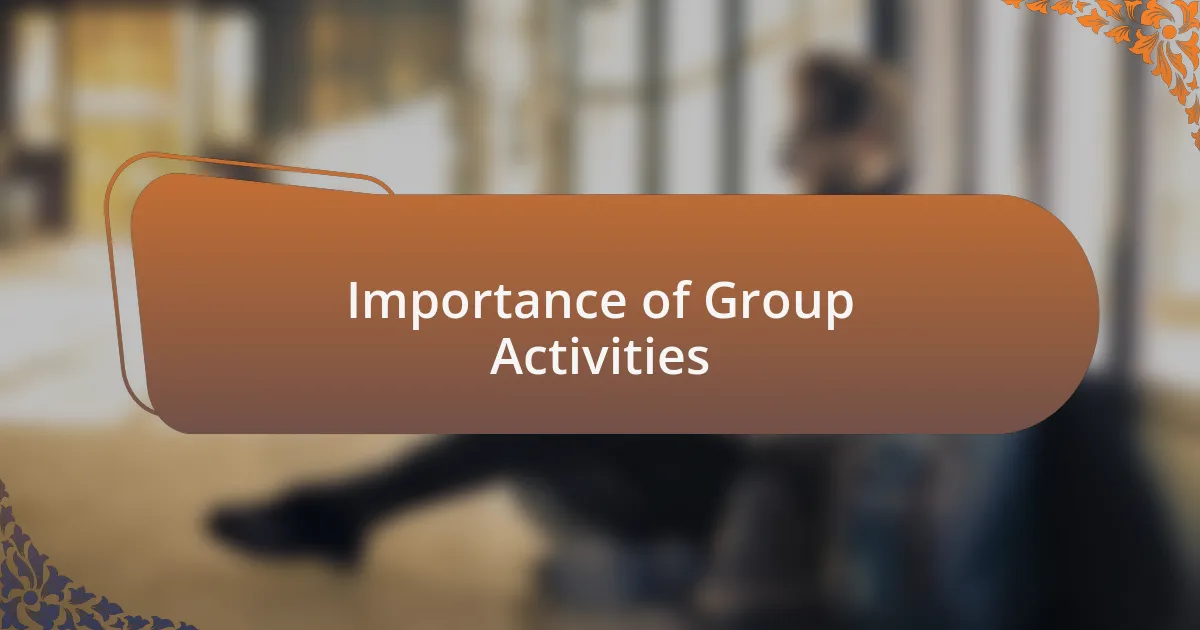
Importance of Group Activities
Group activities play a pivotal role in breaking the silence that surrounds selective mutism. From my experiences, I’ve found that being part of a team can create a sense of belonging and security for children. I once observed a small group project where a shy child, typically reserved, began to express ideas during discussions, demonstrating how shared goals can empower them to find their voice.
In these settings, children learn to communicate in a natural way, as they engage with peers who may share similar experiences. I remember a workshop where participants could express themselves through art. It was remarkable to see a child who rarely spoke at school start to share thoughts vocally while creating—a vivid reminder that communication can flourish in less formal environments.
Moreover, group activities foster connections that are incredibly important for emotional development. When I think about the bonds formed during these interactions, it becomes clear that they lay the groundwork for lasting friendships. How can we harness the power of teamwork to create spaces where every child feels valued and heard? It’s essential to cultivate these experiences, as they not only help children practice speaking but also build their confidence in social settings.
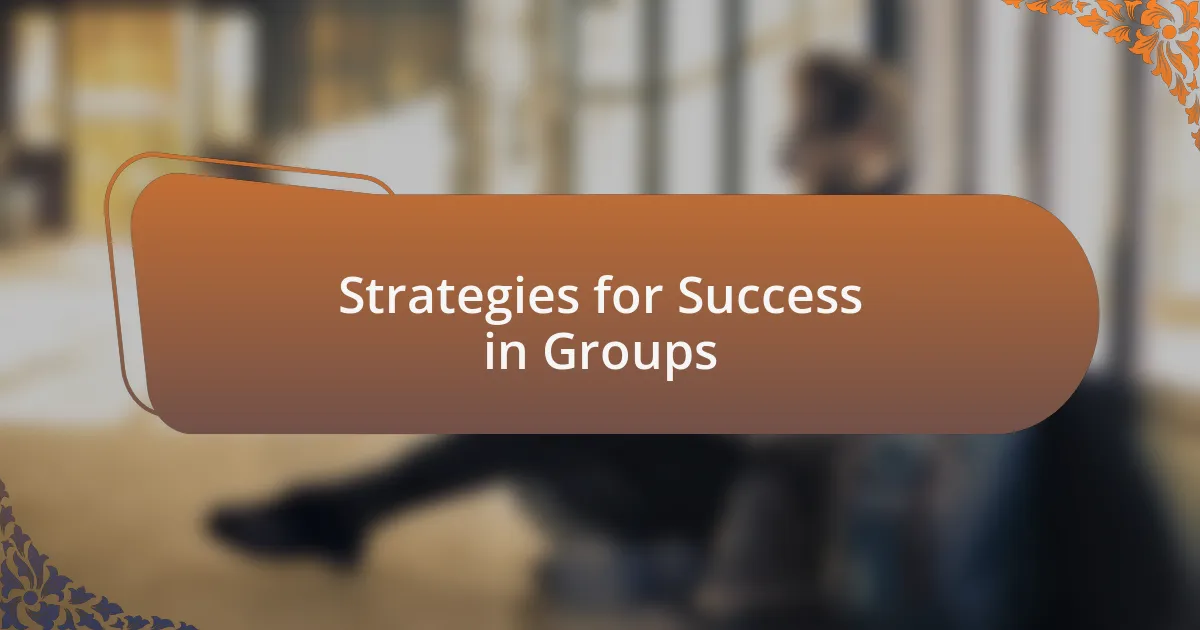
Strategies for Success in Groups
One effective strategy for success in group activities is to create a nurturing environment where children feel safe to express themselves. I recall a team-building exercise where each child was encouraged to share a little about their favorite hobby. It was fascinating to witness how this small act of sharing transformed their interactions. I noticed that when one child spoke, others began to open up too, creating a ripple effect of communication that was heartwarming to observe.
Encouraging gradual participation can also yield remarkable results. For instance, during a group reading session, I noticed a child who usually stayed silent would whisper their thoughts to a friend first, before eventually voicing them to the entire group. This step-by-step approach helped build their confidence without feeling overwhelmed. Isn’t it incredible how such simple adjustments can unlock an inner voice that has been waiting to be heard?
Incorporating playful elements into group activities can be a game changer. I remember facilitating a game where children worked together to solve a puzzle. The excitement of teamwork sparked spontaneous dialogue among them. It made me realize that sometimes, the best way to encourage communication is through play—what do you think happens when the pressure to perform is removed? The joy of collaboration can foster a natural space for dialogue, leading to success in group engagement.
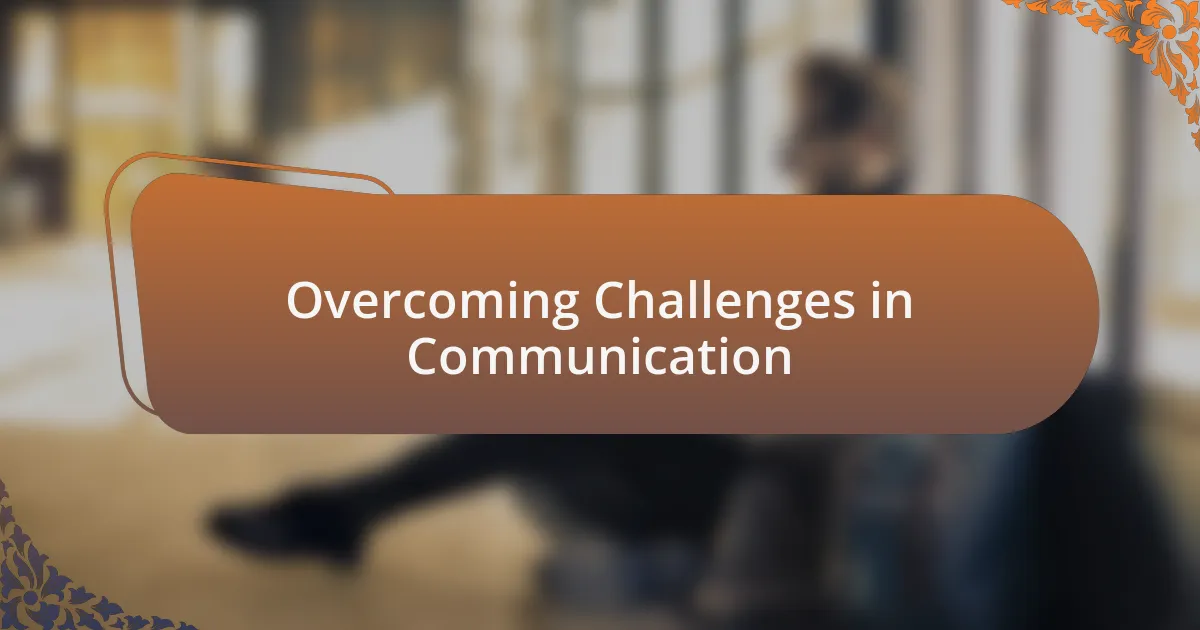
Overcoming Challenges in Communication
Navigating the intricacies of communication challenges can feel daunting, especially in group settings. I remember a quiet child who often withdrew during discussions. When I paired them with a more outgoing peer during a project, I witnessed an amazing transformation. The outgoing child’s encouragement helped the quieter child find their voice. This experience made me think: how powerful can a supportive peer connection be in fostering communication?
Another significant aspect of communication is the importance of active listening. During one group activity, I observed a child who typically struggled to share their ideas actually opening up when they felt genuinely heard by others. I’ve learned that by fostering an environment where each child knows their voice matters, they are more likely to engage deeply. Have you ever noticed how simply acknowledging someone can create a bridge for further dialogue?
Lastly, exploring nonverbal communication can unlock new pathways for expression. In my experience with children, a smile or a nod can often speak louder than words. During one session, a child used drawings to convey their feelings, which opened the door to a heartfelt conversation among the group. It struck me that sometimes words are just one part of the communication puzzle—what if we embraced and celebrated other forms of expression as well?

My Personal Experiences in Groups
When I think about my personal experiences in groups, a memorable moment comes to mind that underscored the importance of shared understanding. During one art workshop, I felt nervous about voicing my ideas, fearing they would be dismissed. But when a participant with similar feelings encouraged me to share, I found the courage to express myself. That simple act of solidarity reshaped my experience. Isn’t it fascinating how our vulnerabilities can resonate with others and create a moment of connection?
Another time, I joined a book club that challenged my comfort zone. Initially, I sat quietly, listening to others passionately debate plot points. However, when I discovered a shared appreciation for a particular character, my enthusiasm bubbled up. Speaking about my favorite scenes felt liberating, and the group’s warmth sparked even deeper discussions. Have you ever felt that rush of excitement when you connect with others over a shared interest?
In a different group setting, I struggled to engage during a team-building exercise that involved lots of verbal communication. I felt the pressure mounting, growing increasingly anxious as others seemed to thrive in the chatter. But when I was paired with someone who welcomed my quieter contributions and offered encouragement to share my thoughts, I realized the impact one supportive person can have. Reflecting on that experience, I wonder: how often do we underestimate our own influence in helping someone break through their silence?
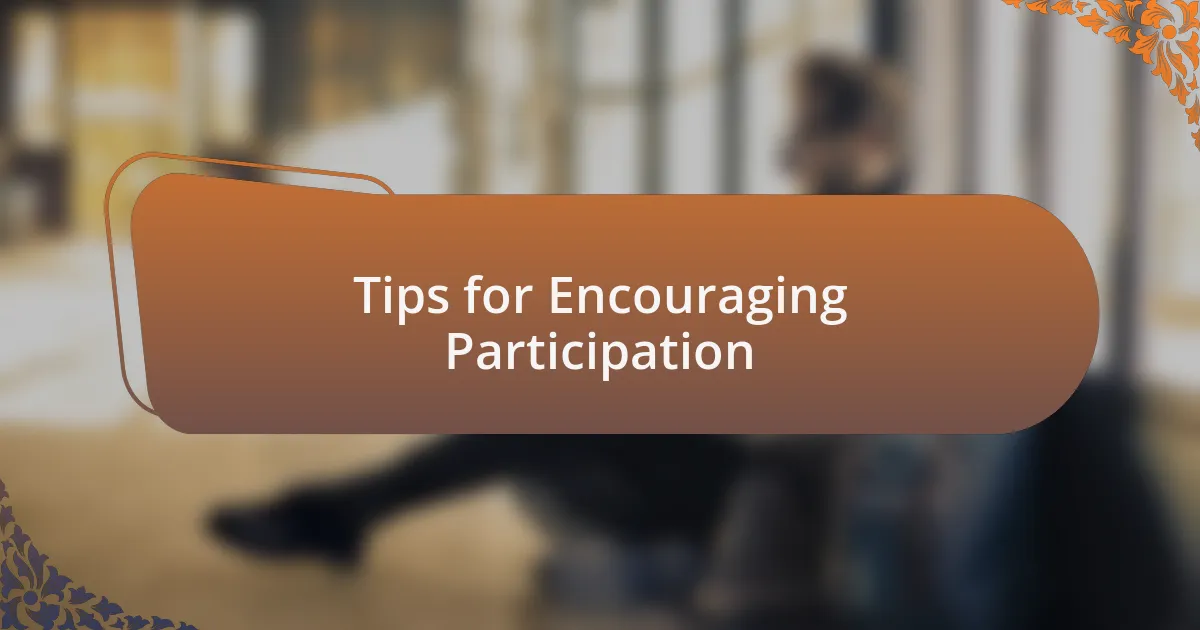
Tips for Encouraging Participation
One effective way to encourage participation is to establish a comfortable environment right from the start. I remember attending a workshop where the facilitator began with a group icebreaker that gently nudged everyone to share something simple about themselves. That warm-up made a world of difference! It allowed me to feel more relaxed and included before diving into deeper discussions. How often have you seen an open atmosphere melt away tension?
Another approach is to recognize individual contributions, no matter how small. In a team project, I made it a point to celebrate even a single idea shared by a quieter group member. Their face lit up, and that moment of acknowledgment encouraged them to engage further. It’s interesting to see how a little validation can resonate deeply, isn’t it? The ripple effect of recognition can truly elevate group dynamics.
Finally, offering choices can be a game-changer. I once participated in a group where we could choose how to contribute—whether through verbal sharing, written reflections, or artistic expression. This flexibility allowed everyone, including myself, to engage in a way that felt most comfortable. Isn’t it empowering when you have the freedom to express yourself on your own terms? When individuals feel they have a voice, participation tends to flow more naturally.
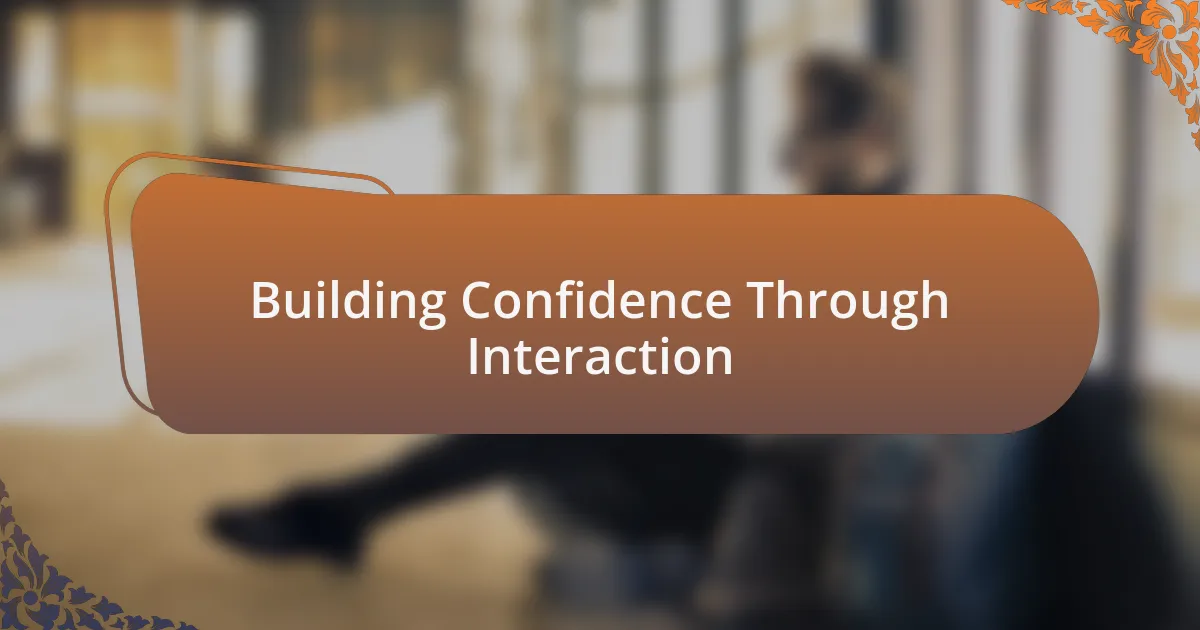
Building Confidence Through Interaction
Building confidence in group activities often stems from meaningful interactions. I recall a time when our small group was tasked with a project, and I hesitated to share my thoughts initially. But, as we started to bounce ideas off one another, a shift occurred. I remember feeling a rush of excitement as I connected with others over shared interests. When was the last time you felt that spark of camaraderie?
Finding common ground can work wonders in bolstering confidence. I once engaged with a shy participant who later revealed a passion for photography, just like me. This newfound connection not only eased their apprehension but also encouraged them to share their unique perspective. Isn’t it remarkable how shared passions can dissolve barriers?
Sometimes, a simple act of active listening does the trick. During one brainstorming session, I made it a point to focus entirely on a quieter member’s idea. By asking follow-up questions and showing genuine interest, I witnessed their confidence blossom right before my eyes. How often do we realize that our attentiveness can be a powerful catalyst for someone else’s self-assurance?